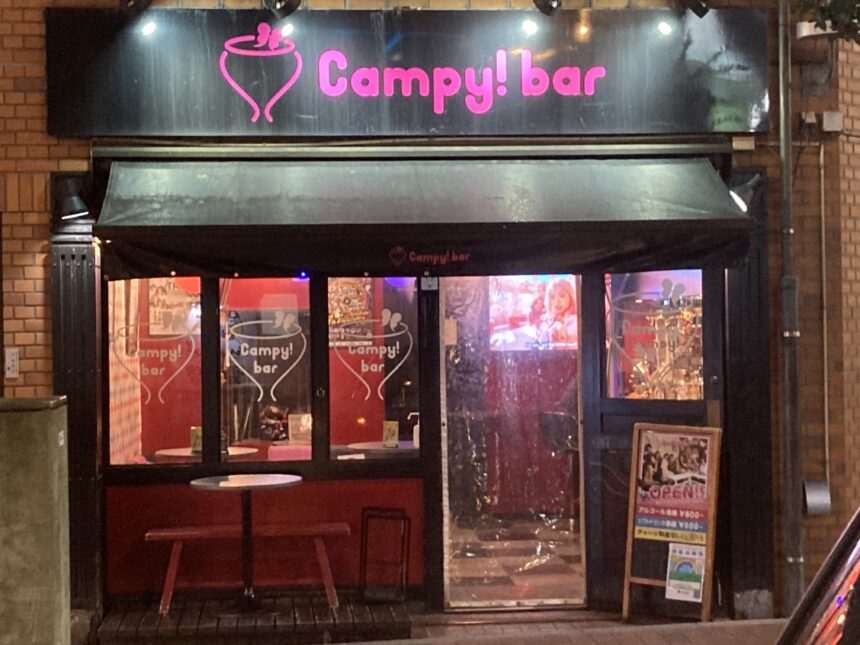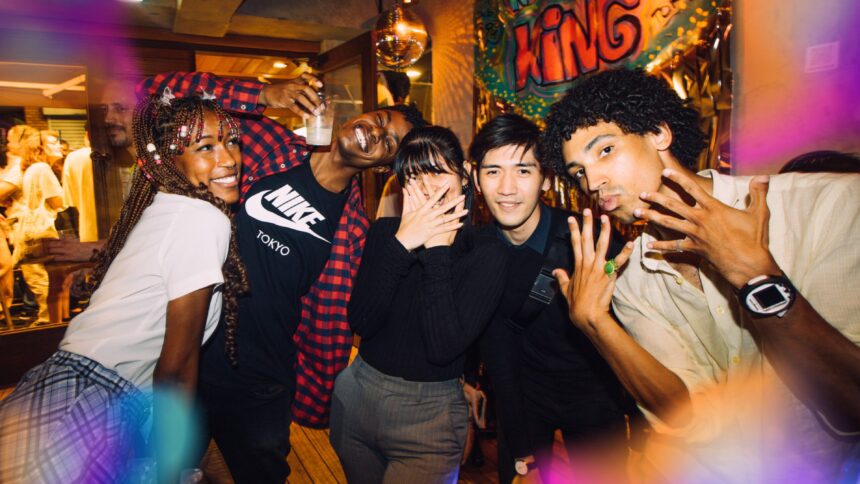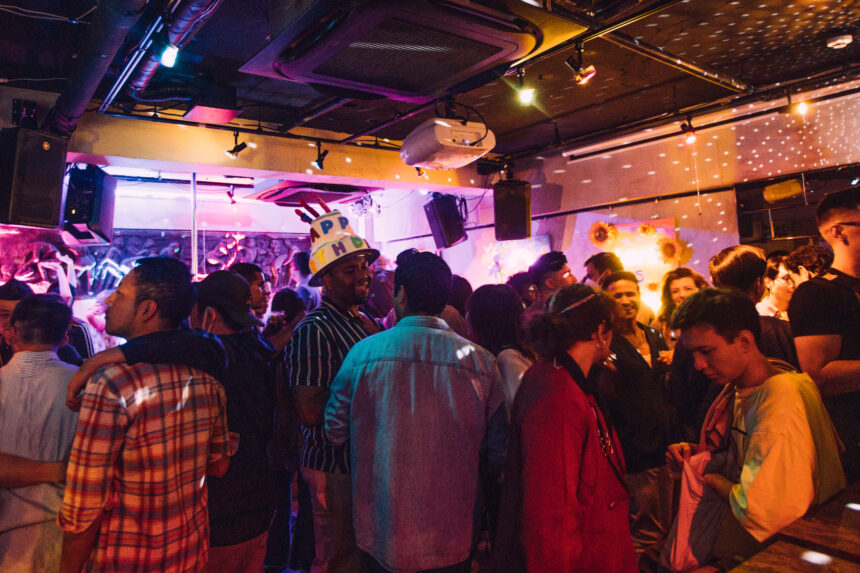Drag culture exists pretty much everywhere, and Tokyo, Japan is no different. Shinjuku Nichome, the most famous gay area of Tokyo, is not only known for its vibrant gay and lesbian culture, but also for its multitude of possibilities when it comes to free gender expression and gender nonconformity.
So, How Does Drag Play Into This?
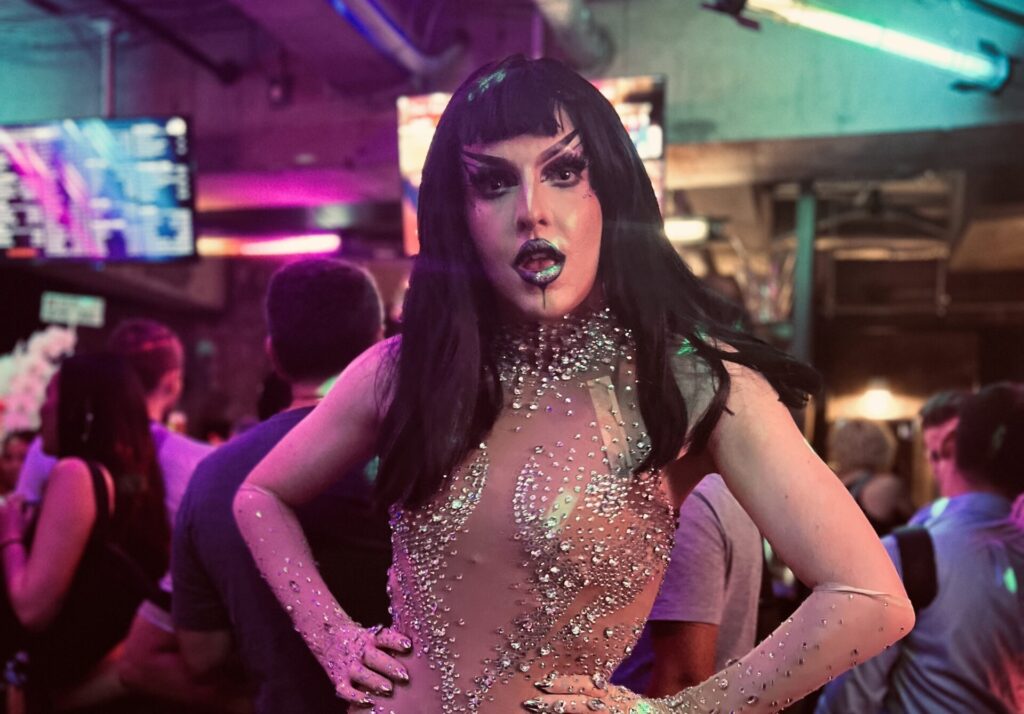

Drag bars are a fun way to dress up in your favorite gender-bending outfits and go out to show others your personal style, or, for someone less familiar with drag culture, just to see what it’s all about. The cool thing about drag is that it doesn’t always have to be the most intricate and detailed outfit that you’ve ever seen. There are many easier ways to gender bend in a more casual style, that doesn’t require specialized, expensive costumes and heavy makeup.
Meet a Drag Queen at Campy! Bar
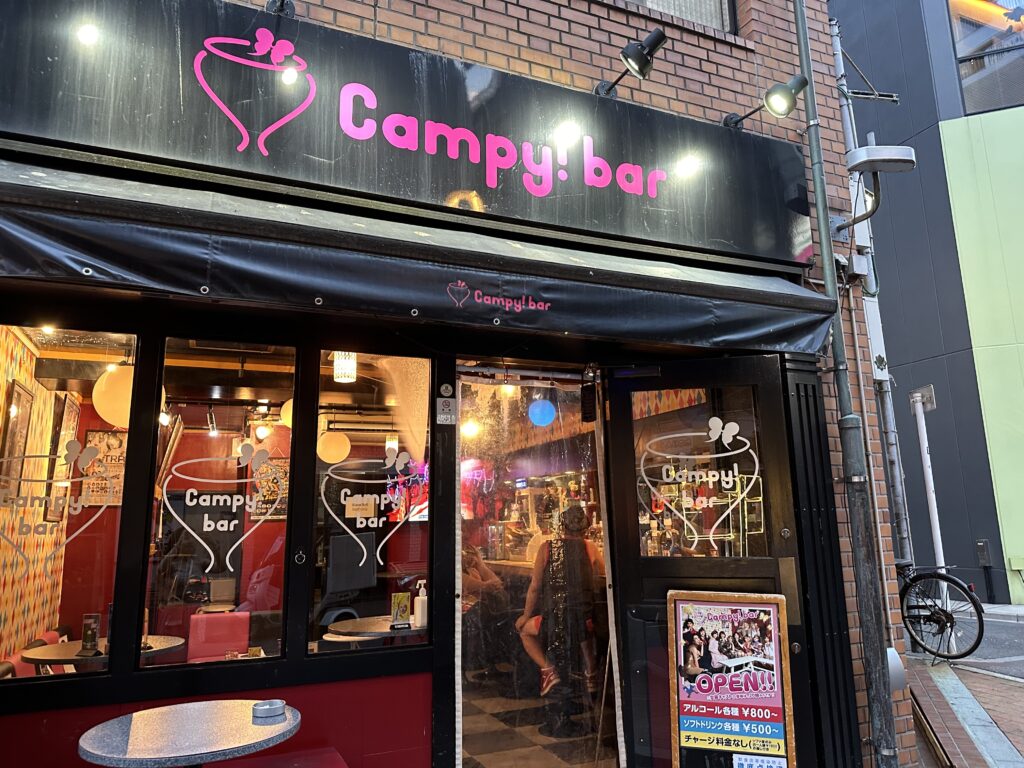

At Campy! Bar, a drag bar in Shinjuku Nichome, there is usually at least one drag queen working at the entrance of the venue and one sitting with customers at the bar, just casually talking and joking with whomever wants to listen. Not everyone who works at the bar is dressed in drag. The two bartenders working behind the counter are in everyday clothes and mostly focus on serving customers drinks, while the drag queens focus mainly on sparking up a conversation with customers.
Conversations Can Get Lively!
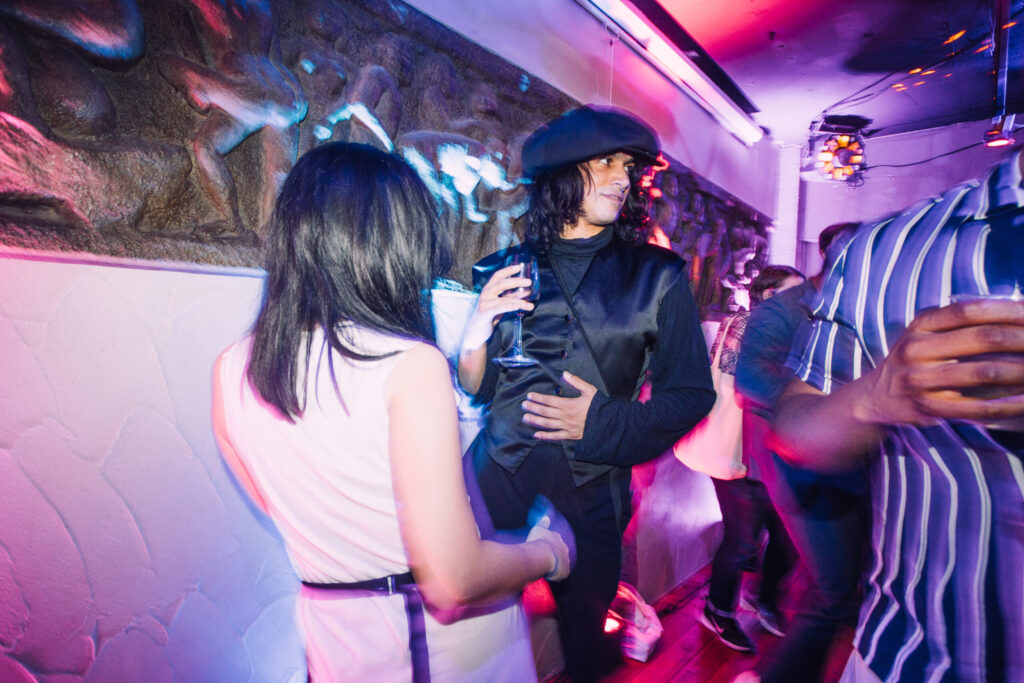

Conversation topics are not the usual small talk that you may hear among two Japanese people who’ve just met. Conversations at Campy! Bar can easily shift to more open and mature themes without much warning. Although, honestly, it’s kind of refreshing to be able to talk about subjects that are often considered taboo with such ease, since doing this is generally pretty rare in Japan.
If you don’t know much Japanese, or even if you know a fair amount but are not very well-versed in slang, conversations at this bar can easily become hard to follow. One of the drag queens on staff may have to explain to you the meaning of a certain informal word in English, and the unexpected meaning of it may catch you off guard. For this reason, Campy! Bar is also a great place for you to learn more Japanese slang, playful or otherwise.
What Else Do Drag Bars Have to Offer?


The bar offers various perks to customers, depending on how much they are willing to spend. In addition to five or six bar stools, the bar has pink leather-upholstered couches that are accessible for an extra fee of 1,000 yen. Sitting here is a good idea if you’re with a large group of friends and want to order a bottle of champagne together, or just want a more comfortable place to chat. The bar is also open for reservations, charging 1,500 yen per person to book the place to yourself, which is a pretty good deal for private use of the bar.
For regular, non-booking customers, there is no cover charge, which makes coming here often to talk with the drag queens and bartenders a much more affordable venture. Additionally, Campy! Bar sells both alcoholic and non-alcoholic drinks, so if you still feel like socializing but don’t feel like drinking, this will not be a problem.
Unique Decor and Tasteful Costumes


The decor of the bar resembles something you might find at a club in the 90s, with a pink and black checkerboard tile floor, and red leather barstools. Two TVs hang on the walls of the bar – both playing K-pop music at a comfortably low volume, so that you can still hear others speak to you easily. The most notable aspect of the decor, however, is the set of ornaments hanging above the bar counter. Each one is a uniquely designed figure of a merman, though forgoing the traditionally chiseled physique that you may expect of such a creature, each one of these has a unique body type, ranging from slim to “dad bod.” Each one also has a uniquely colored tail and is committed to their own activity, such as cooking food in a pan or eating ice cream.
The cool thing about the drag queens working at this bar is that they are not always dressed opulently and extravagantly. One of the queens sitting at the bar was just wearing a pair of jeans, a black shirt and a colorful silk jacket, with a simple hairstyle. The only thing flashy about her look was her heavy makeup. The other queen was wearing a blonde wig and a red dress, which was certainly elegant but not super decadent. This makes it a little bit less intimidating to talk to drag queens, especially if you’re not very familiar with drag, or if you’re pretty plainly dressed, yourself.
The Tokyo Drag Scene Isn’t Just Campy! Bar
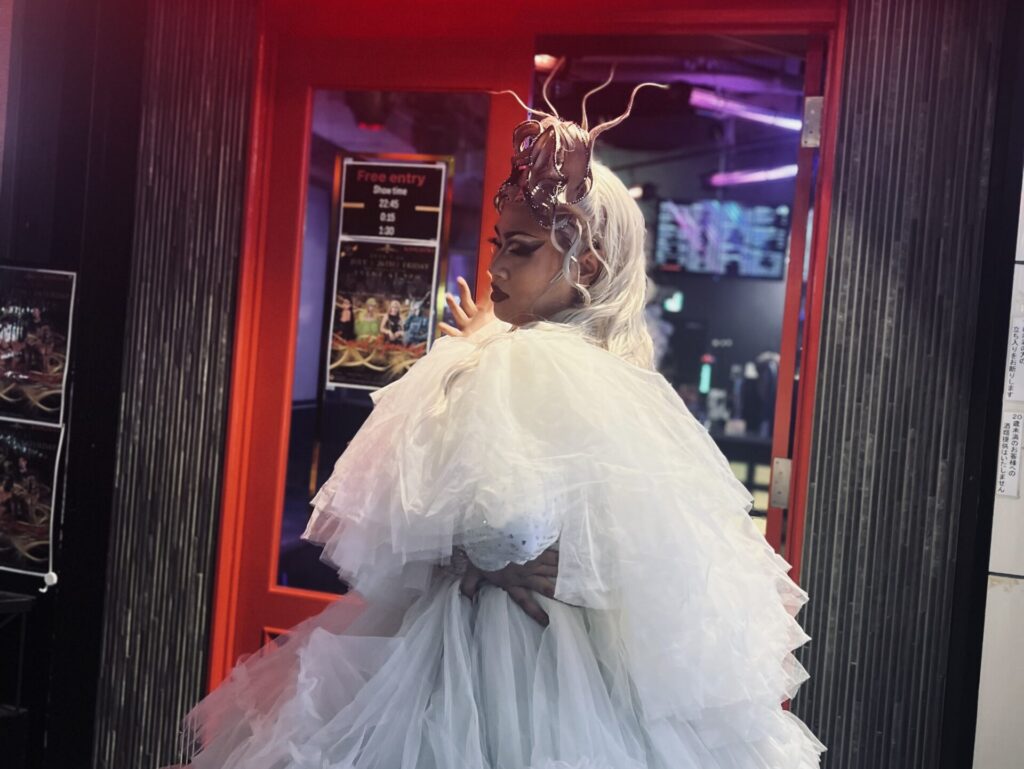

Apart from this bar, a broader drag culture also exists in Shinjuku Nichome. On any given Saturday night, you’ll find much more flashily dressed drag queens standing in the street and chatting with their friends. Their outfits tend to be brighter and sparklier, with neon colors being common, and eccentric make up looks, such as outlining your facial features to make yourself look like a manga character, popping up here and there. Many of these queens wear brightly-colored wigs and platform heels, as well as revealing clothing made of sequin-woven mesh.
Striking up a conversation with someone so flashily dressed is sometimes intimidating. If you’re checking out Nichome for the first time in a casual outfit, it’s completely understandable. But, most of the time, even eccentrically dressed drag queens are happy to chat with you. The culture of Nichome is unique in that people tend to be more friendly and outgoing than in other parts of Tokyo.
Drag Is Actually for Everyone
Furthermore, you don’t even need to identify as LGBTQ+ to become interested in drag. There are drag queens (men who dress as women), drag kings (women who dress as men), and non-binary drag enthusiasts who dress in a more gender neutral fashion. You don’t have to identify as queer to become interested in any of these artforms or to try them out. The possibilities are endless. Drag is about expressing your personal style in a way that society has not historically deemed acceptable. It is a way to rebel against social expectations and have a little fun while doing so.
If you’re interested in trying out drag, or just in exploring Shinjuku Nichome, why not check out Campy! Bar and have some memorable conversations with the drag queens who work there? If you don’t speak any Japanese, it may be more difficult, but it’s always worth a shot to see if any one of them speaks English. If you’re feeling up to it, you may even want to come to Nichome dressed in drag yourself!
If you are interested in more gay bars in Shinjuku Nichome, check this article below!
Want more info on bars in Nichome, check out this article.

